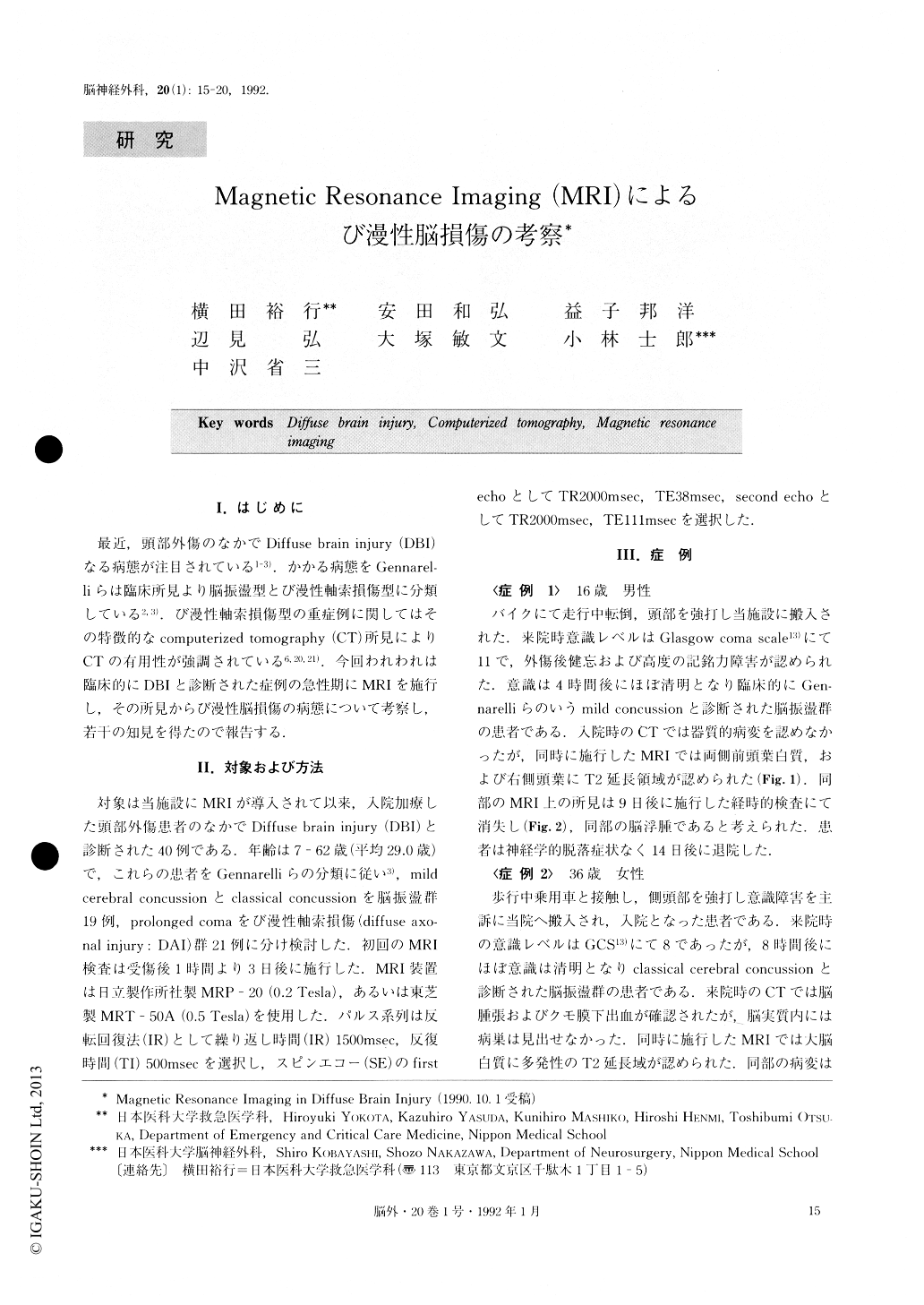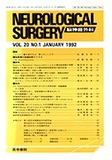Japanese
English
- 有料閲覧
- Abstract 文献概要
- 1ページ目 Look Inside
I.はじめに
最近,頭部外傷のなかでDiffuse brain injury(DBI)なる病態が注目されている1-3).かかる病態をGennarel—liらは臨床所見より脳振盪型とび漫性軸索損傷型に分類している2,3).び漫性軸索損傷型の重症例に関してはその特徴的なcomputerized tomography(CT)所見によりCTの有用性が強調されている6,20,21).今回われわれは臨床的にDBIと診断された症例の急性期にMRIを施行し,その所見からび漫性脳損傷の病態について考察し,若干の知見を得たので報告する.
Forty cases diagnosed as diffuse brain injury (DBI) were studied by magnetic resonance imaging (MRI) performed within 3 days after injury. These cases were divided into two groups, which were the concussion group and diffuse axonal injury (DAI) group estab-lished by Gennarelli. There were no findings on com-puterized tomography (CT) in the concussion group except for two cases which had a brain edema or sub-arachnoid hemorrhage. But on MRI, high intensity areas on T2 weighted imaging were demonstrated in the cerebral white matter in this group. Many lesions in this group were thought to be edemas of the cerebral white matter, because of the fact that, on serial MRI, they were isointense.
In mild types of DAI, the lesions on MRI were lo-cated only in the cerebral white matter, whereas, in the severe types of DAI, lesions were located in the basal ganglia, the corpus callosum, the dorsal part of the brain stem as well as in the cerebral white matter. As for CT findings, parencymal lesions were not visualized especially in mild DAI.
Our results suggested that the lesions in cerebral con-cussion were edemas in cerebral white matter. In mild DAI they were non-hemorrhagic contusion; and in se-vere DAI they were hemorrhagic contusions in the cerebral white matter, the basal ganglia, the corpus cal-losum or the dorsal part of the brain stem.

Copyright © 1992, Igaku-Shoin Ltd. All rights reserved.


